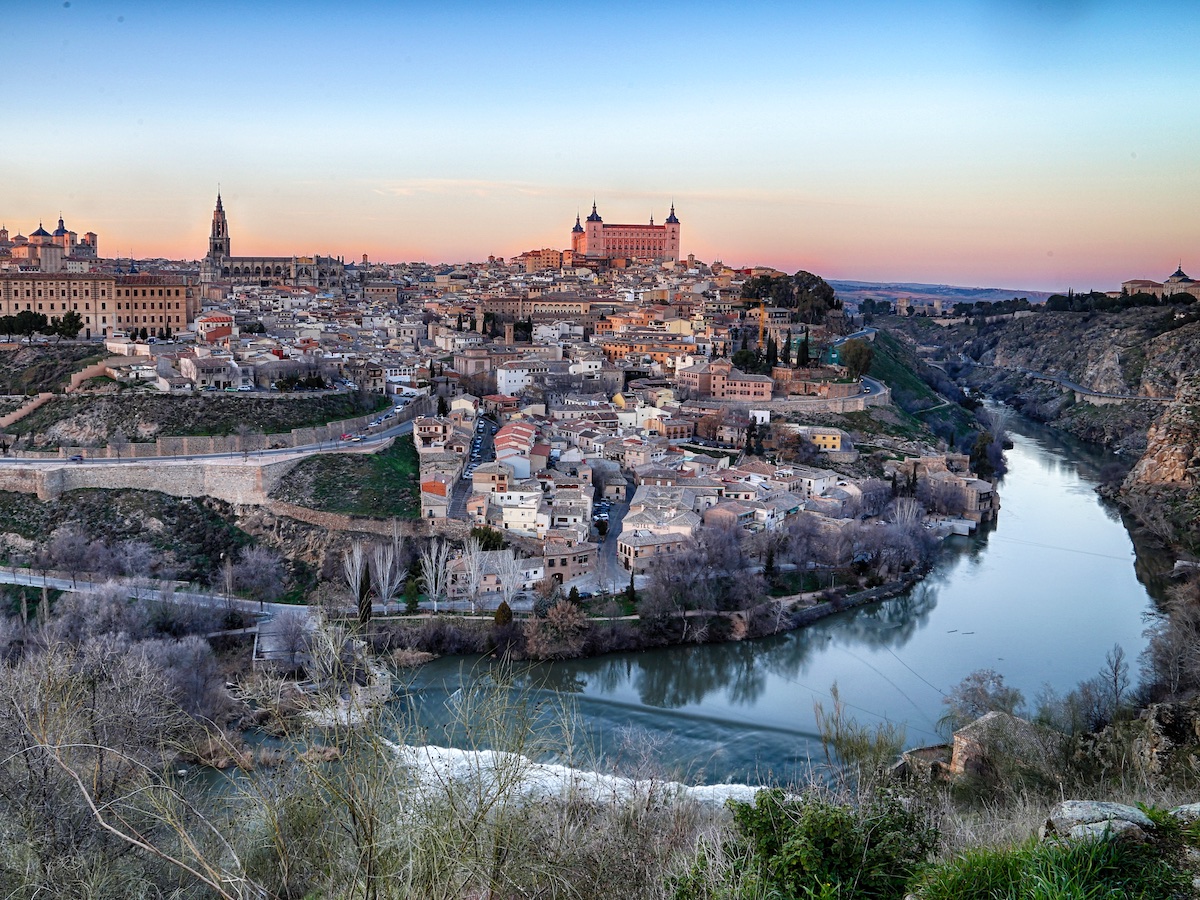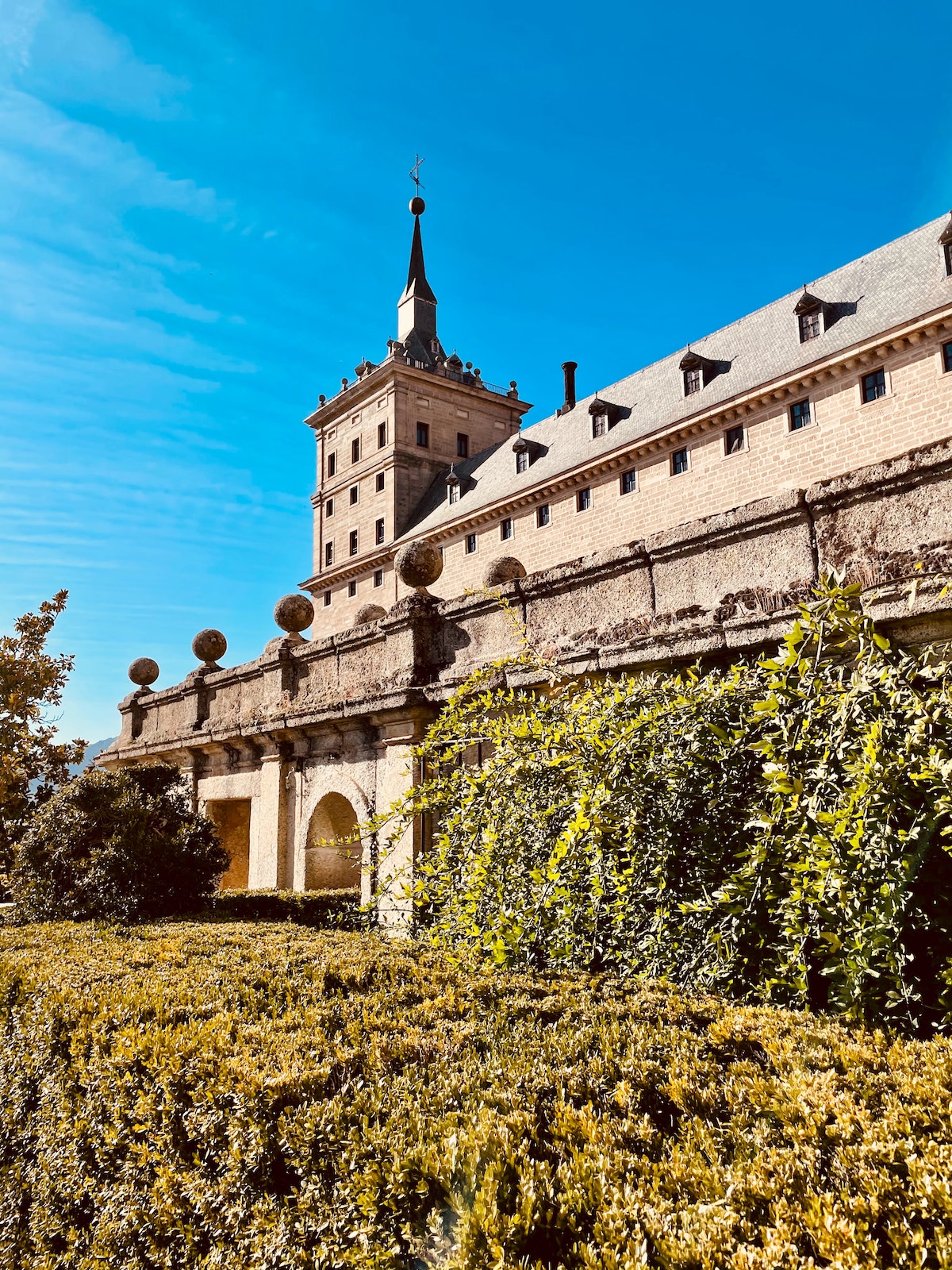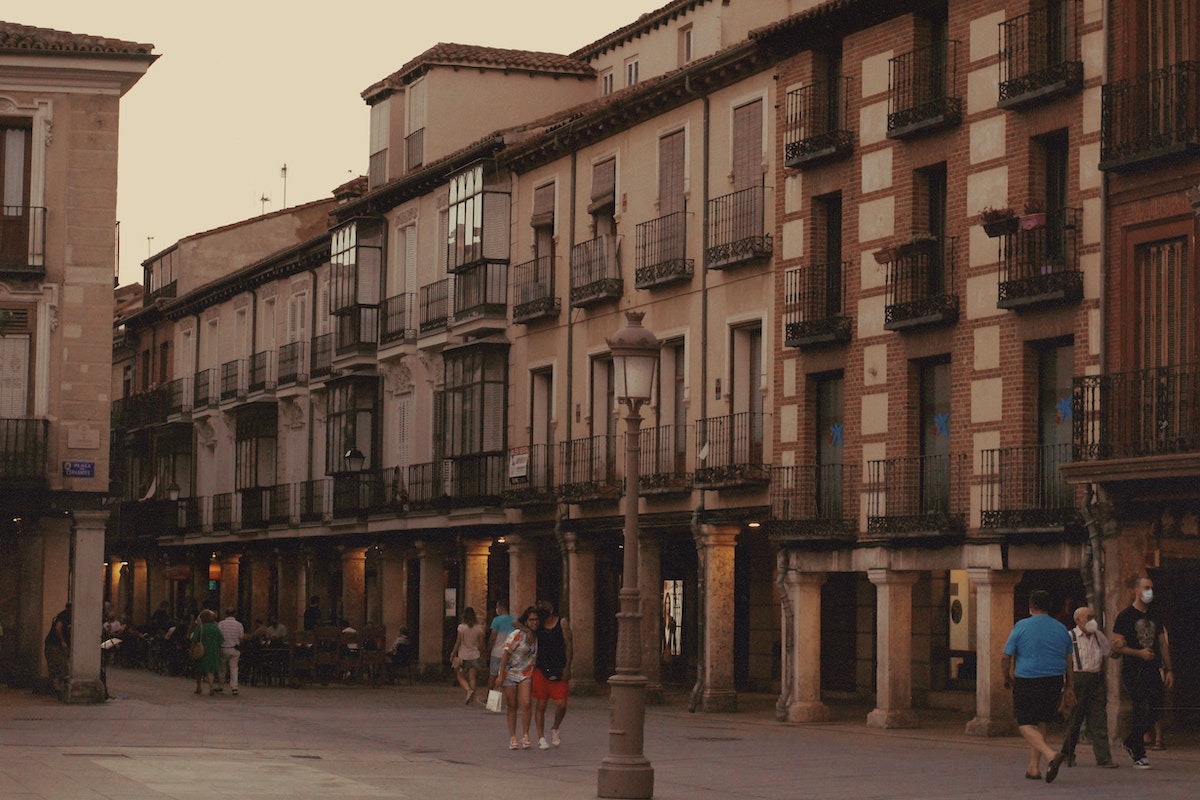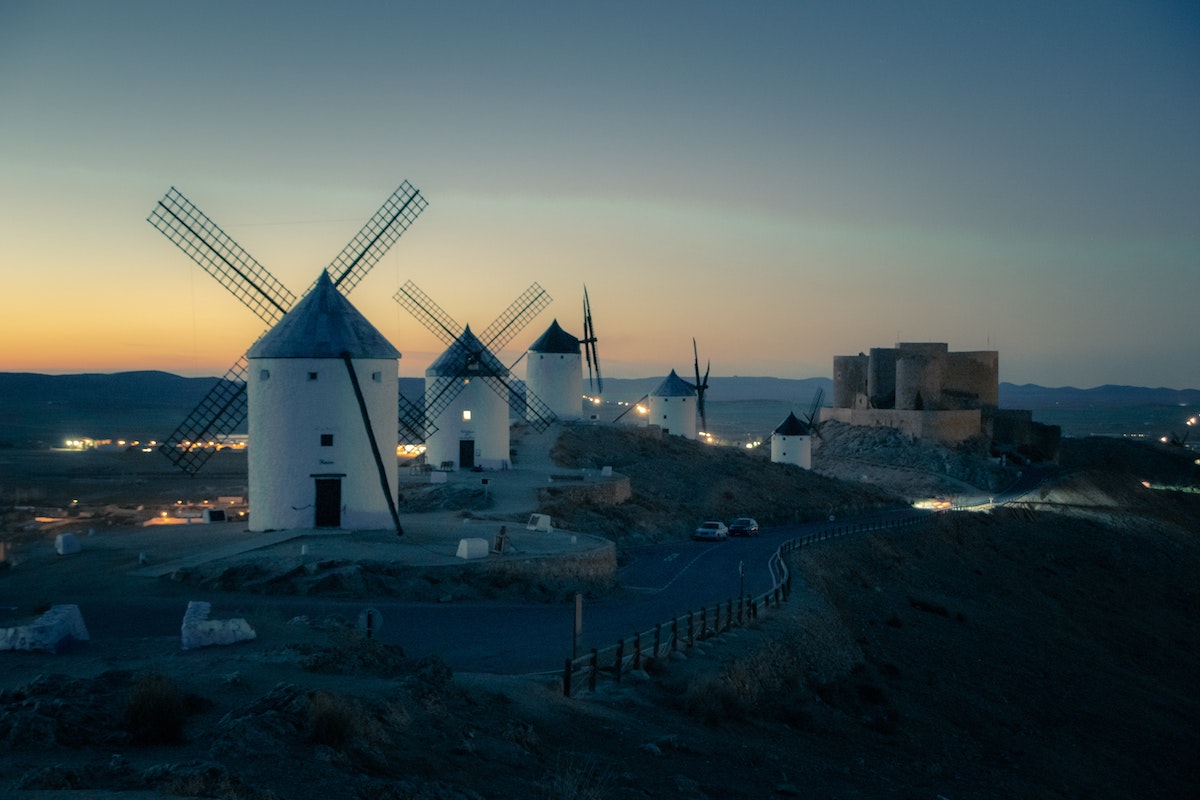As much as we love Madrid, sometimes a change of scenery is nice. Luckily, Madrid is located right in the center of Spain. From there, it boasts easy public transportation connections to all corners of the country. In short: when it comes to day trips from Madrid, you’re spoiled for choice.

The beauty of Spain is unquestionably its regionality. From the passionate, duende-driven south to the rugged Atlantic terrain of the north, the food, culture, and even occasionally languages vary from one Spanish region to the next.
With this in mind, the great thing about Madrid is that you have all of that at your fingertips. These day trips from Madrid make it easy to experience all that Spain has to offer. You’ll even get back in plenty of time for an evening tapas crawl here in the capital.
Most popular day trips from Madrid
Widely considered the best day trips from Madrid, these five popular destinations should of course be at the top of your list!
Toledo
Fun fact: Madrid wasn’t always the capital of Spain! With its stunning (and strategic) panoramic views, the small but powerful hilltop city of Toledo had the honor until 1560.
It won’t take you long to see why this city is one of the best day trips from Madrid. Wander the winding streets of this charming historical city where Christians, Muslims and Jews all co-existed harmoniously for centuries. Take a gander at artisan sword craftsmanship, visit the 15th-century Gothic cathedral, and climb up to the ancient Alcázar for incredible views.
After a day of sightseeing, be sure to try Toledo’s famous marzipan. Many consider Toledo to be the birthplace of this almond-based sweet—legend says it was created here during the time of Moorish rule—but different versions of the story persist. No matter which version you believe, it’s still a must-try typical treat while you’re here!
How to get to Toledo from Madrid: Take the high-speed train from Atocha (half an hour) or the Alsa bus from the Plaza Elíptica station (one hour).

Segovia
It only takes an hour to get to Segovia; however, it feels worlds away from busy Madrid. At the end of the Middle Ages, the city—which was an important center for trade—experienced something of a golden age.
The impressive Segovia cathedral is one of several works of breathtaking Gothic architecture that were completed during this period. Another noteworthy attraction is its incredibly preserved Roman aqueduct (which has towered over the city for nearly 2,000 years!). The city’s magical castle is said to be the inspiration for some of those seen in Disney movies.
But Segovia is one of our favorite day trips from Madrid for another reason altogether: the famous roast suckling pig, or cochinillo asado. The meat is unbelievably tender and flavorful, and pairs beautifully with a glass of local Bierzo wine. To top off your lunch, stroll the cobblestone streets in search of the typical dessert from Segovia, ponche segoviano.
How to get to Segovia from Madrid: Take the high-speed train from Atocha (25–30 minutes) or the Avanza bus from the Moncloa station (one hour and 20 minutes).

El Escorial
Nestled in the Guadarrama mountains northwest of Madrid is a small village that’s home to a giant royal complex.
The Royal Site of San Lorenzo de El Escorial, simply referred to as El Escorial, dates back to the 16th century. The complex includes a royal palace, a monastery, a school, a basilica and a Royal Pantheon, and moreover is one of the several historical residences of the King of Spain. For that reason, it’s no wonder why half a million visitors descend on the small town from Madrid every year!
How to get to El Escorial from Madrid: Take bus 661 or 664 from the Moncloa station (one hour).

Ávila
History buffs, this one’s for you.
Ávila is without a doubt one of the most enchanting 16th-century towns in Spain. It’s surrounded by ancient city walls, some of the best preserved and most complete of their kind in the country. Climb to the top and enjoy the captivating views of the quaint town below.
As if the vibrant village wasn’t enough, Ávila is set against the gorgeous backdrop of rolling hills. When you work up an appetite from exploring, dig into typical dishes like the famous local steak (chuletón de Ávila). Save room for some yemas de Ávila, traditional sweets made of candied egg yolk and sugar.
How to get to Ávila from Madrid: Take the train from Principe Pio (one hour and 40 minutes). Another option is the Jiménez Dorado bus from Estación Sur (one hour and 20 minutes).

Cuenca
A stunning medieval gem of a city with UNESCO World Heritage status, Cuenca lures hundreds of thousands of curious travelers every year. As one of the most popular Madrid excursions, its biggest draws are the casas colgadas—gravity-defying “hanging houses” perched perilously on the edge of a cliff above a gorge.
In addition to the dramatic architecture and landscapes, Cuenca also boasts a beautifully preserved historic center bursting with colorful houses. It’s also home to an impressive number of worthwhile museums for such a small city. If you have time, the beautiful natural landscapes surrounding the city are also great for hiking.
How to get to Cuenca from Madrid: Take the high-speed train from Atocha (one hour) or the Avanza bus from Estación Sur (two hours and 10 minutes).

Unique Day Trips from Madrid
Already checked all of the above destinations off your list—or looking for something a bit more off the beaten path? Give one of these lesser-known (yet still worthwhile!) Madrid excursions a try.
Chinchón
Chinchón is a magical place where life moves slowly. You’ll truly feel like you’ve stepped back in time as you roam around this little town.
The small city attracts visitors for its unique oval-shaped plaza mayor and the well preserved 18th-century buildings that surround it. It’s even got a surprisingly famous local product: anise liqueur, best enjoyed on a sunny terrace.
Anise is available in sweet as well as dry varieties. It pairs especially well with any of the local pastries from the many bakeries that are scattered throughout the center.
How to get to Chinchón from Madrid: Take bus line 337 from the Conde de Casal bus stop to Chinchón (45 minutes).

Aranjuez
You generally don’t need much prior planning to make an Aranjuez excursion happen. Just hop on the train straightaway and enjoy this enchanting town that’s home to the royal family’s former summer palace!
In addition to touring the beautiful palace, the 150 acres of gardens—designed in the style of Versailles—are ideal for relaxing afternoon strolls. The town itself is also well worth exploring, with its well-manicured wide avenues and sprawling plazas.
How to get to Aranjuez from Madrid: Take the C3 Cercanías (commuter train) line from Sol or Atocha (45–50 minutes), or the Samar bus from the Méndez Álvaro station (35–45 minutes).
Throughout the summer and fall, you can also take the Strawberry Train to Aranjuez. This restored wooden train lets you experience what train travel was like in the 19th century while sampling one of Aranjuez’s most famous delicacies: strawberries!
No worries if you can’t board this classic locomotive—you can find asparagus (another beloved local product) and strawberry creations on any menú del día in town.

Ribera del Duero Wine Region
D.O. Ribera del Duero wines stand alongside their counterparts in Rioja as some of the best-known Spanish wines, particularly for reds. The region is rather easily accessible from the capital, making it a can’t-miss day trip from Madrid for wine aficionados.
Firstly, stop for a bite in Aranda de Duero, the region’s largest town, and from there take your pick from among the dozens of surrounding wineries. The idyllic country landscapes—not to mention the chance to taste some of Spain’s best wine straight from the source—make for a positively dreamy escape.
How to get to the Ribera wine region from Madrid: This excursion is overwhelmingly easier by car. Take the M30 highway out of the city to the A1, and from there it’s a straight shot north (one hour and 40 minutes).

Cercedilla & the Guadarrama Mountains
Want to get out and about in nature? This is the trip for you, without a doubt.
Cercedilla and the surrounding Sierra de Guadarrama are home to some of the best hiking trails in the Community of Madrid. As you explore, you’ll come across dozens of viewpoints (miradores) offering stunning vistas of the Fuenfría Valley down below. If you don’t feel like an active hike but still want to enjoy the fresh air, the Las Berceas leisure park is a relaxing place to spend an afternoon.
The quiet mountain town of Cercedilla itself is small but impressive, and well worth an hour or two of exploring even if you came mainly to hike. Ancient Roman roads and bridges crisscross the area, and the village is dotted with centuries-old buildings constructed in an architectural style unique to the mountainous areas of the Community of Madrid that’s especially hard to find these days.
How to get to Cercedilla from Madrid: Take the C2 cercanías line from Atocha (one hour and 20 minutes) or bus line 684 from Moncloa (one hour).

Alcalá de Henares
Alcalá de Henares is another UNESCO World Heritage Site, and it’s easy to see why. Particularly known as the birthplace of legendary Spanish writer Miguel de Cervantes (author of Don Quixote), the city is full of history at every turn.
Walk along the charming streets and visit Cervantes’ house and the Church of Santa María, where he was baptized in 1547. The local university, which is one of the oldest in the world, is a global leader in the study of Cervantes and his work.
Despite the city’s small size, there’s always a lot going on. The main plaza alone hosts dozens of events throughout the year, such as a medieval festival every October. But beyond the monuments and history, Alcalá de Henares is also home to something truly amazing—free tapas! With every drink you order, you’ll have your pick from a selection of tapas to enjoy with it.
How to get to Alcalá de Henares from Madrid: Take the C2 or C7 cercanías lines from Atocha (40 minutes).

Consuegra & the Don Quixote Windmills
Live the legend of the Man from La Mancha himself in Consuegra, home to the massive whitewashed windmills that have become one of the most lasting images of the Spanish landscape.
The 12 windmills—five of which have conserved their original mechanism—sit on a rolling hillside just outside the town of Consuegra itself, with a rather solemn castle dating back to the Moorish days perched nearby. None of them still serve their original function, but a handful now have been repurposed—one houses an ice cream parlor, and another the local tourist information center.
This is a particularly beautiful area to visit in the fall, when the surrounding fields turn a beautiful purple color as the saffron flowers come into bloom.
How to get to Consuegra from Madrid: Take the InterBus bus from Estación Sur (two hours and 20 minutes). Driving down the A42 and CM42 highways is much faster (one hour and 30 minutes).

Day Trips from Madrid by High Speed Train
Even more stunning Spanish destinations lie a bit further afield. Luckily, the high-speed AVE and Avant trains make day trips from Madrid to these cities especially quick and easy.
While it’s technically possible, we don’t recommend Barcelona or Seville as a one-day excursion from Madrid. Both simply have too much to see and warrant at least a few days each.
Valencia
Come to Valencia for the paella; stay for the whimsical architecture and laid-back vibes
Spain’s third-largest city is a sunny gem of a destination on the eastern Mediterranean coast of the Iberian Peninsula. You could easily spend an entire day exploring its futuristic City of Arts & Sciences complex, but it has much more to offer as well. The lively old town is full of character, and foodies won’t want to miss the impressive Mercado Central—one of the largest fresh food markets in all of Europe.
How to get to Valencia from Madrid: Take the high-speed train from Atocha (one hour and 40 minutes).

Salamanca
The breathtakingly historic city of Salamanca has a lot to offer. It’s home to one of Europe’s oldest and most acclaimed universities, an ornate Plaza Mayor, and not one but two extraordinary cathedrals—just to name a few.
Everything about Salamanca captures Castilla at its most classic: from the stately historic architecture to the pure variety of Spanish spoken here (often said to be one of the easiest dialects to understand). It’s also a particularly great city for foodies—the local market is packed with fresh regional products, and the thriving tapas scene is one of the best in the area.
How to get to Salamanca from Madrid: Take the high-speed train from Chamartín (one hour and 40 minutes).

Córdoba
If a trip to sunny, passionate Andalusia is calling your name, you’re in luck. Córdoba is a quick train ride south from Madrid and offers countless possibilities for things to see, do, and eat.
Home to a world-record four UNESCO World Heritage sites, Córdoba is a small yet thriving city with history around every turn. The stunning Mezquita-Catedral is something you have to see to believe (an entire Renaissance cathedral built inside a massive eighth-century mosque!), and immaculately preserved Roman structures are scattered throughout the city as well.
Córdoba is especially striking in the springtime, when the city comes alive with bright flowers blooming to life. If you happen to be in Spain during the first half of May, you won’t want to miss the colorful floral patios festival—a rare chance to see the private inner courtyards of local homes at their most beautiful.
How to get to Córdoba from Madrid: Take the high-speed train from Atocha (one hour and 45 minutes).

Zaragoza
Whether as a day trip from Madrid or a stopover on the way up to Barcelona, Zaragoza is well worth your time.
As one of Spain’s most underrated cities, Zaragoza offers a wealth of fascinating culture and history. It’s an art lover’s dream, packed with works by Goya (who is from the area) and full of stunning architecture as well. And no matter how many Spanish churches and cathedrals you’ve seen, the stately Basílica de Nuesta Señora del Pilar with its multiple domes and pillars will be unlike any other.
How to get to Zaragoza from Madrid: Take the high-speed train from Atocha (one hour and 15 minutes).

Day trips from Madrid FAQs
You can’t go wrong with any of these day trips from Madrid, as each offers something fascinating yet totally unique. However, when it comes to travel convenience, proximity, and things to see and do (and eat!), Toledo checks all the boxes.
We recommend two days at the very least. 48 hours in Madrid gives you time to see all the major sights, including at least one of the famous museums, and even explore a bit off the beaten path. However, three to four days is ideal, as it will give you more time to discover more hidden gems in the city and take a day trip.
Both cities are excellent, and you can’t go wrong either way. Toledo is larger and has more to see and do, but depending on your travel style, you may find it hard to fit everything you want to experience into one day. It’s also a more popular option, so expect more crowds of tourists.
Segovia is a smaller, quieter city and still gets plenty of visitors, though not as many as Toledo. It is easier to explore in one day, but this may be a drawback depending on how much time you want to spend outside Madrid.
In addition to having plenty to see and do within the city limits, Madrid’s surroundings are also full of worthwhile sights. Highlights include the home of famed Spanish author Miguel de Cervantes in Alcalá de Henares (40 minutes away), the stately royal palace of Aranjuez and its gorgeously manicured gardens (45 minutes away), and the massive monastery complex at El Escorial (one hour away).
Valencia is an hour and 40 minutes away from Madrid on the high-speed train, and about three hours and 45 minutes by car.